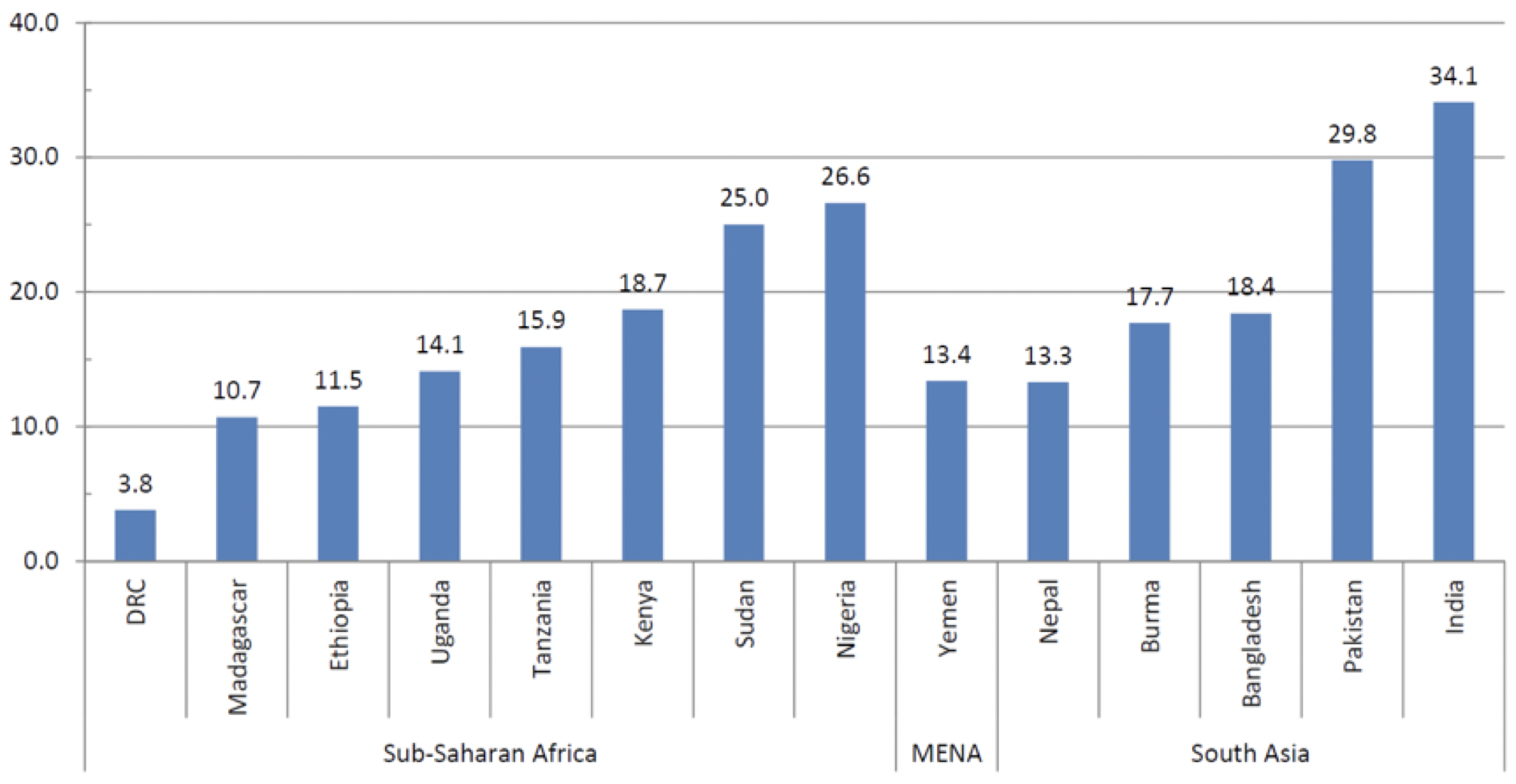Invest in Global Child Nutrition

Table of Contents
Author(s)
Farhan Majid
L.E. and Virginia Simmons Fellow in Health and Technology PolicyShare this Publication
- Download PDF
- Print This Publication
- Cite This Publication Copy Citation
Majid, Farhan. 2016. Invest in Global Child Nutrition. Policy Brief: Recommendations for the New Administration. Rice University’s Baker Institute for Public Policy, Houston, Texas.
Overview
Fetal growth restriction, suboptimal breast-feeding, stunting, wasting, and micronutrient deficiencies in vitamin A and zinc were associated with more than three million deaths globally in children younger than five years of age in 2011, representing 45% of all child deaths that year. Well-nourished children are less likely to be infected by disease and more likely to grow up healthy, smart, and wealthier. Investing in child nutrition and alleviating child hunger in low-income settings are not only important from an ethics and equity perspective, but also make economic sense.
In the context of U.S. involvement in global issues, surveys by the Kaiser Family Foundation have found that Americans consider improving health in developing countries an important priority for the next U.S. president and Congress. Sixty-one percent of Americans believe the U.S. should play at least a major role in improving global health. Ninety-three percent of Americans say that investments in child health are a top or important priority. Global health spending is one of the few topics that enjoys bipartisan support. Three key recommendations from research in the economics and epidemiology of child nutrition are highlighted below.
Recommendation 1: Invest Early, Especially in the First 1000 Days of Life
The 1,000 days between conception and age two present a critical window of opportunity for investing in a child’s nutritional health. Chronic adult health conditions, including heart disease, type 2 diabetes, and obesity, can be triggered by nutritional deficits during this period. In fact, investments before birth shape not only adult health, but also labor markets and socioeconomic well-being. In general, rates of returns are understood to be highest in the first 1,000 days, and broadly fall with age, though they still remain positive.
Recommendation 2: Do Not Underestimate Small Investments
Figure 1 — Benefit-cost Ratios of a Stunting Reduction Package

Note DRC = Democratic Republic of Congo; MENA = Middle East and North Africa.
Economists have argued that small investments in child nutrition may lead to large changes over the course of life. Better child nutrition improves nutrition later in life (self-productivity), boosts non- nutritional outcomes (cross-productivity) and increases the rate of returns in later life investments (dynamic complementarity).
Evidence that low birth weight is highly correlated with stunting between the ages of 0 and 5, and that childhood heights are correlated with adult heights, is consistent with processes of self-productivity.
Majid (2015) shows that Muslim Indonesian children who were in utero during Ramadan score 7.4% to 8.4% lower on cognitive and math tests. A randomized trial involving nutritional supplements targeted at Guatemalan children in first 1,000 days of life resulted in a 46% increase in male wages, and significantly higher cognitive skills for males and females, after 35 years. Such findings highlight the high economic returns to small changes in child nutrition during critical periods of development.
Recommendation 3: Investments in Child Nutrition Provide One of the Best “Bang for the Buck” for Future Generations
Behrman et. al (2015) highlight average benefit-cost ratios for a package of services to reduce stunting in 14 high-risk developing countries in Asia and Africa. The median benefit-cost ratio is 18.7 (Kenya), with a range from 3.8 (Democratic Republic of Congo) to 34.1 (India). Moreover, the benefit-cost ratios for most countries appear to be significantly greater than one. Among the interventions considered are universal salt iodization, iron fortification of staples, and supplementation of iron-folic acid, vitamin A, and therapeutic zinc, as well as community-based nutrition programs and deworming.
In 2008, a distinguished panel of economists ranked the most effective solutions to the world’s 10 biggest challenges. Five of the top 10 challenges involved malnutrition. Investments in zinc and vitamin A were voted the no. 1 most cost-effective solution for malnutrition in children, followed by iron and salt iodization (no. 3), biofortification (no. 5), deworming and other nutrition programs at school (no. 6), and community-based nutrition promotion (no. 9).
References
Behrman, J., et al. 2015. “Human capital and productivity benefits of early childhood nutritional interventions.” In “Disease Control Priorities,” edited by D. Jamison et al. Seattle: University of Washington Department of Global Health.
Black, Robert E., et al. 2013. “Maternal and child undernutrition and overweight in low-income and middle-income countries.” The Lancet 382, no. 9890: 427-451.
Currie, Janet, and Tom Vogl. 2013. “Early- Life Health and Adult Circumstance in Developing Countries.” Annual Review of Economics 5: 1-36.
Majid, Muhammad Farhan. 2015. “The persistent effects of in utero nutrition shocks over the life cycle: evidence from Ramadan fasting.” Journal of Development Economics 117: 48-57.
This material may be quoted or reproduced without prior permission, provided appropriate credit is given to the author and Rice University’s Baker Institute for Public Policy. The views expressed herein are those of the individual author(s), and do not necessarily represent the views of Rice University’s Baker Institute for Public Policy.


